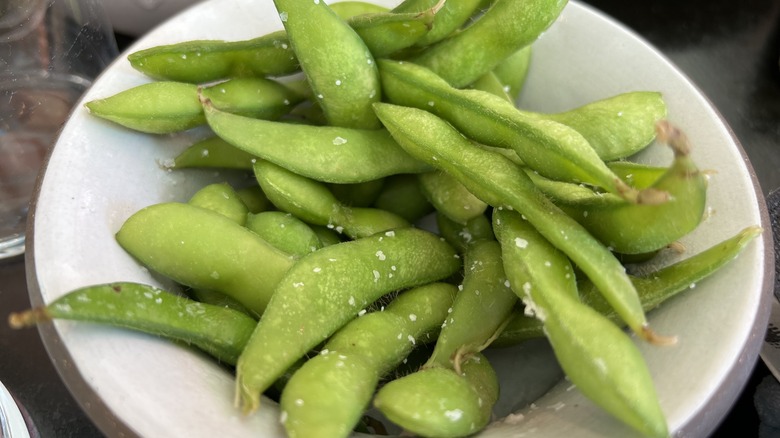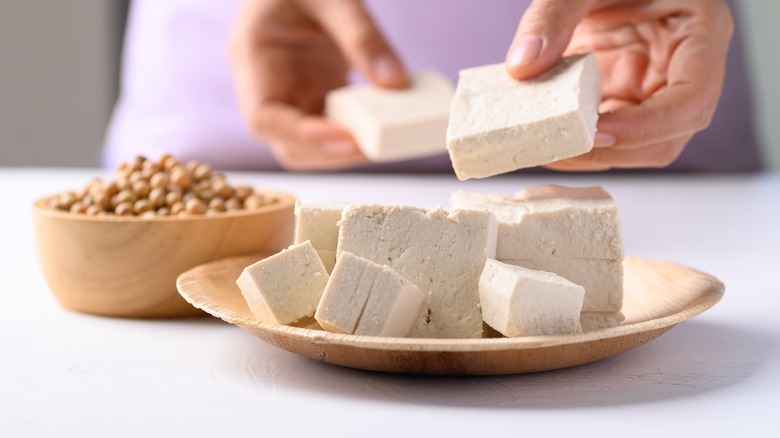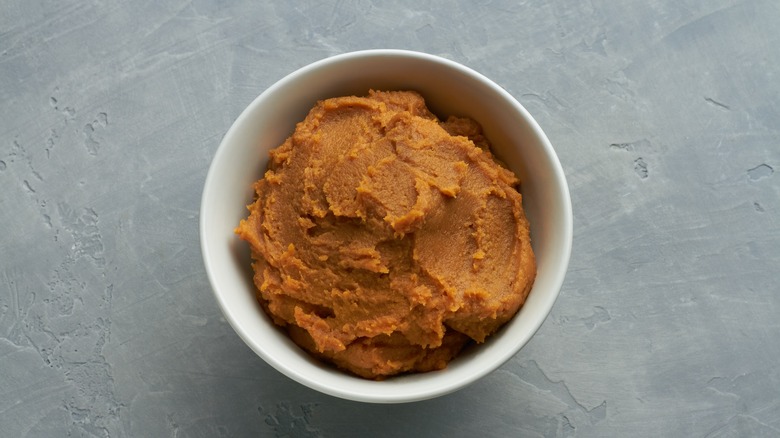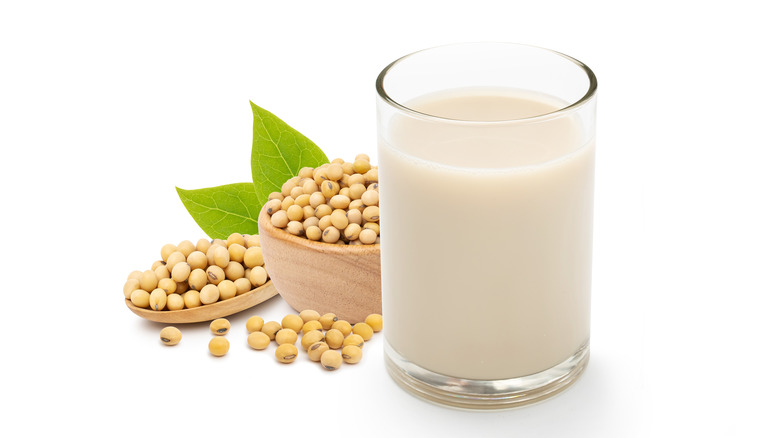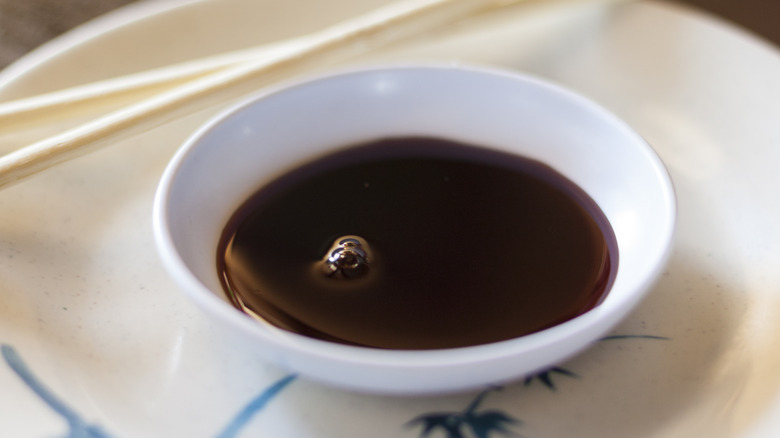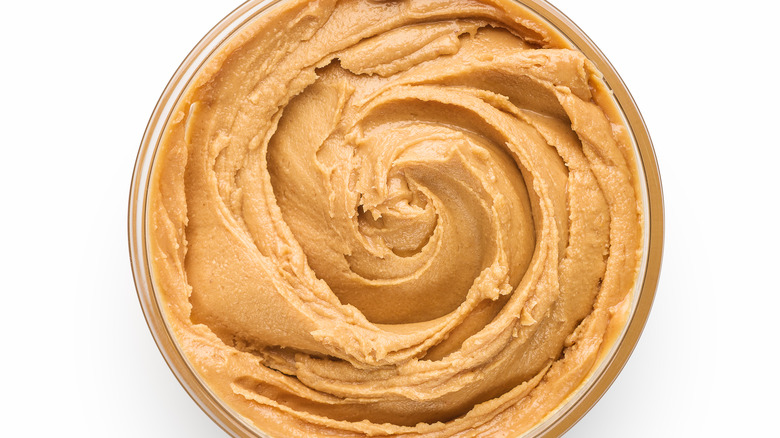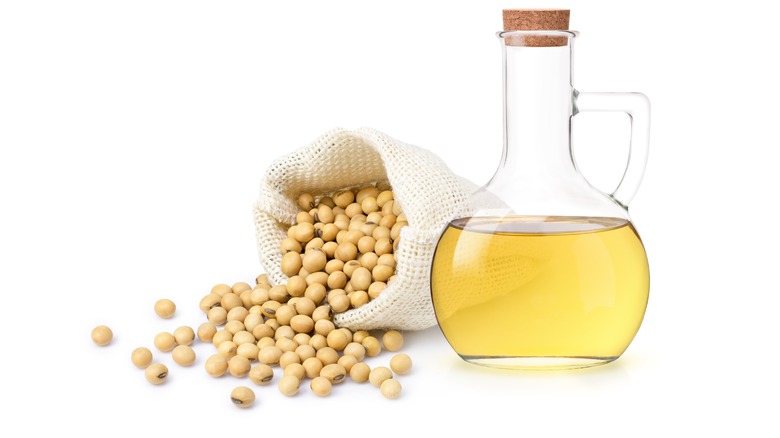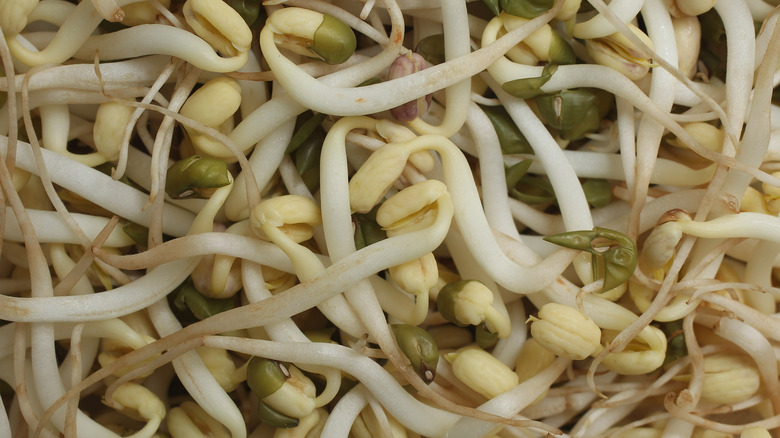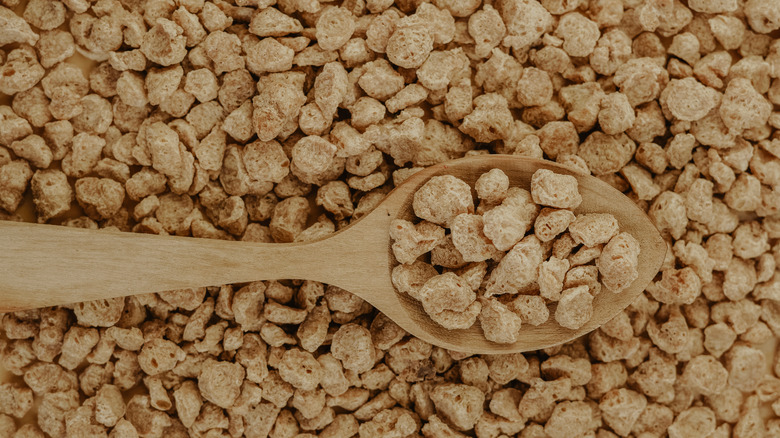12 Soy-Based Ingredients You Should Know About
Soy is an incredibly versatile plant. It can be made into a wide range of products, each behaving in its own individual way, and providing different textures and flavors to recipes. One thing soy products always have in common, though, is that they provide an extra protein boost to whatever you're preparing. This makes them an ideal substitute for those who want to avoid meat but still need to get in that essential protein. Soy comes with many other benefits, as well. For example, it contains no cholesterol, which is nice for the folks monitoring theirs.
At the same time, soy is definitely not for everyone, as many people have developed allergies to the plant in all its forms. In this case, it's important to learn about which foods include soy, so you can be sure to steer clear of them. Below you will find a handy guide to some of the more obvious foods to avoid (soy milk, duh), and some of the sneaky ones, such as soy lecithin. These are soy-based ingredients you should be aware of both if you're avoiding them, or if you're looking to add soy to your diet in different ways.
Edamame
Edamame are immature, green soybeans, harvested before they're fully grown. You may find these in the frozen food section at your grocery store or are often served as an appetizer at a Japanese restaurant. The word, in fact, comes from the Japanese "eda," meaning stem, and "mame," meaning bean. Barring any allergies, they're a solid addition to your diet, which can be very easily done.
In a restaurant, you might find them steamed or boiled and simply seasoned with salt, but you can also prepare edamame at home yourself. Just toast some sesame seeds in a skillet and combine them with Chinese five-spice powder and flaky sea salt. Then boil the frozen edamame while still in their pods, pat them dry, and drizzle some toasted sesame oil on top. Once the beans are cold and dry, add the spice mix and serve. You can also throw edamame into a salad with some almonds, cabbage, carrots, green onions, and some mixed greens. Dress it all with a mixture of sugar, white wine vinegar, sesame oil, soy sauce, freshly grated ginger, and top with pomegranate seeds. It doesn't get much fresher than that.
Tofu
Tofu is an all-around favorite when it comes to adding protein and texture to vegetarian dishes. This ingredient is made from condensed soy milk and turned into a block. We know that doesn't sound enticing, but the beauty of tofu is that it seems to take on the flavor of its host exceedingly well, which means that if you prepare your tofu properly and season it well, it'll taste just the way you want it to. For instance, when purchasing tofu at the grocery store, you've probably noticed that it comes in a container with plenty of liquid. That liquid needs to be pressed and disposed of in order to make sure the tofu absorbs as much of your seasoning as possible. You can also alter its texture by freezing it and then thawing it, bringing out the spongier side of its nature.
Another top tip is to add cornstarch to your tofu. This will add crunch and avoid the menace of the soft and squishy tofu bite, which might not be what you're going for on any particular Tuesday. But don't stop there. Tofu is your vegetarian oyster, and it can literally be molded into the image of almost any meal or dessert: combine silken tofu and 70% dark chocolate to make a mousse, turn it into cream cheese and spread it on your bagel, and with the right marinade, you can even turn tofu into a bacon taste-alike.
Miso
You have likely heard of miso soup, a mainstay at many Japanese restaurants that is made with miso paste, broth, and often a few chunks of tofu. But miso is so much more than that. First of all, once you have the paste — which is a mixture of fermented soybeans, grains, and a lot of salt — you can add it to anything you want, including salad dressings and stews.
And don't be afraid to try light miso in your dessert recipes. One great example is actually in a perfect topping for fudge brownies. The miso comes in at the topping stage. Make the miso fudge by cooking butter, condensed milk, and chocolate together in a pan, before whisking in some miso. In the home stretch, spread the fudge over the brownies and cool until ready to serve, at which point you can top it all off with a nut mixture.
Soy milk
Soy milk is made from soybeans that have been soaked in water, ground, pressed, and then briefly cooked. One thing to know, though, is that there is a big difference between mass-market soy milk and the homemade, fresh variety. The latter can be made in an electric soy milk maker in a few minutes flat, yielding a creamy liquid with a mild beanie flavor. After that, you can enjoy it hot or cold with a bit of sugar or sesame oil.
What you find at the supermarket is a horse of a different color. Aside from various flavorings such as sugar or vanilla, your average soy milk carton will contain a bevy of stabilizers and thickeners that help the beverage more closely resemble cow's milk in appearance and behavior. For example, fresh soy milk may curdle when added to coffee, but mass-produced soy milk tends to fare just fine. However, both types are refreshing, light, and nutritious options if you just want a bowl of cereal in the morning.
Soy sauce
This ubiquitous condiment is made from fermented soybeans and wheat, though gluten-free varieties are also available. If you've tried it, you'll know that soy sauce always packs a punch when it comes to flavor. Soy sauce also comes in many varieties. Japanese soy sauce is the most well-known and widely-used in America, while Chinese soy sauce tends to be more soybean-heavy and is great for stir-fries. White soy sauce is made with more wheat than soybeans, giving it a lighter color and flavor, and making it the ideal choice for more subtle recipes.
And you don't have to limit your soy sauce use to sushi and other Asian dishes. You can use it in pretty much everything. It can be an ideal marinade for chicken or steak, or it can add a touch of umami to a homemade gravy. And don't shy away from adding it to salad dressings. Just hold the salt and use soy sauce, instead.
Tempeh
Tempeh is another great meat substitute alongside tofu. It is made with fermented cooked soybeans and can come in different varieties, including the addition of flaxseeds or grains. Tempeh has a slightly stronger flavor than tofu, leaning towards nutty, but it, too, can be made to absorb pretty much any condiment or seasoning you attach it to. It also holds its shape better than tofu, making it the ideal meat-free steak or burger.
Although relegated to obscurity for many years, tempeh can now be found in most supermarkets in the produce section stored at cold temperatures. And, you can easily cook with it at home. Try soaking it in a marinade for several hours before searing it in a skillet. You can follow almost any meat-and-marinade recipe for this one, and just substitute the meat with tempeh. Tempeh also works wonders as a stew ingredient. Whatever spices you put in your broth will seep into the tempeh and concentrate there, giving your dish a series of flavor bursts every time you bite into a piece of tempeh.
Soy lecithin
This food additive is contained in many products, including ones you might not expect. If you start looking for it on food labels, you'll be surprised to see just how ubiquitous it is. For example, you might find it in ice cream, baby formula, margarine, chocolate, food supplements, and even some bread. Soy lecithin is often added to such products to stabilize them and increase their shelf life.
That said, if you have a soy allergy and might want to avoid any products containing soy, you don't have to be on high alert when it comes to soy lecithin. According to the University of Nebraska, the Food Allergen Labeling & Consumer Protection Act (FALCPA), along with many dietitians, estimate that the amounts of soy lecithin contained in these products are typically not enough to induce an allergic reaction. As such, the presence of the substance might not even be signaled on the packaging. But if you're a big chocolate eater or love to have some ice cream, be aware of the potential presence of soy traces if you're subject to this type of allergy.
Soy protein isolate
Protein powders can come in many different forms to suit various needs. Whey is a popular choice, but so is soy, which in isolate form can be added to a mix to create a convenient and nutritious protein powder. Its abundance of amino acids makes it a vegetarian complete protein, which means it can give us all nine of the essential amino acids that our bodies can't produce on their own, as most meats do.
A few typical ways to add soy protein isolate to your diet include slipping it into smoothies and milkshakes. It thickens the texture of these drinks without changing the flavor too much, thereby fitting right in. Another option is to sprinkle soy protein powder on your oatmeal. Just cook your oats with a bit more water to accommodate the extra ingredient, and you'll be sitting pretty in no time with a creamier-than-ever bowl of oats. Meanwhile, you'll be getting the protein fix you need to stave off hunger for the rest of the morning. And if both whey and soy are no-go ingredients for you, you can always try a plant-based protein powder option, perhaps even one based on coconut.
Soy nut butter
For people who are allergic to nuts, smooth, delicious, and filling spreads like peanut butter and almond butter are off the table. The good news is that soy nut butter can reproduce some of the sumptuous textures and appearance of regular nut butter without an actual nut in sight.
The catch is that some soy nut butter you find in the store might be made in a facility that produces nut products, so it may not be strictly safe for those with severe allergies. But the good news is that it's not hard to make it at home, and it'll end up tasting better that way anyway. Just gather soy nuts in any form, a neutral-tasting oil, and salt, and throw it all in a food processor. After about 10 minutes you should have smooth, creamy butter. But before you bite into it, be aware that it's not actually going to taste like peanut butter. Although peanuts and soybeans are both legumes, their flavor profiles are very different. If you don't like the recipe you just tried, consider roasting your soybeans first for a more pronounced taste. You can also add cinnamon, maple syrup, or whatever else is on hand to spruce up and customize your butter.
Soy nuts
Soy nuts are obviously not nuts, as we've discussed soy itself isn't a nut. They are actually soybeans that have been left on the plant until maturity (unlike edamame), and then soaked and roasted until crunchy.
Once in their crunchy form, the possibilities are endless. Use them as a gluten-free salad topping instead of croutons. Put them in your chocolate chip cookies instead of walnuts. Enhance their flavor by coating them in their own oil, which would be soybean oil, and roasting them with some salt. You can also make a delicious dessert in the form of soy nut clusters. Just spread them on a baking dish with some dried fruit, then pour a pre-cooked mixture of brown rice syrup, brown sugar, and salt on top. Quickly stir everything together so that the nuts and fruit are thoroughly coated, separate the mixture into clusters, and cool before serving.
Soybean sprouts
If you've ever used a salad bar, you've probably run into these long, white tubes with a little green oval ball at the end. These were most likely soy bean sprouts, though mung bean sprouts look and taste similar. In fact, soybean sprouts make excellent additions to salads. They provide a burst of fresh crunch, which also works very well on Thai or Vietnamese soups, pairing ideally with the fresh lemongrass scents.
However, since these sprouts are eaten raw, they do tend to come with a certain risk of bacterial growths of the type that can cause food poisoning. But if you're hell-bent on using soybean sprouts in your cooking and want to be extra safe about it, you can cook the sprouts to kill off any potential danger. Although this eliminates the fresh crunch this product is known for, you'll still get access to a tasty and nutritious ingredient. Just throw the sprouts into the pan with your stir-fry, or cook them up with Brussels sprouts, garlic, and bacon (or a tofu or tempeh substitute marinated to taste like bacon).
Textured soy protein
Tofu and tempeh are somewhat processed meat substitutes, packed with nutrients but not necessarily the perfect stand-in for the real deal. That's where textured soy protein comes in. This highly processed product may have fewer nutritional benefits than the purer forms of soy, but when it comes to creating meat-like products, it wins every time. This is because it has been manufactured to resemble the texture of many types of meat while remaining mostly flavorless, allowing it to take on whatever spices are added to the mix. This is done by isolating the protein from the soybean, defatting it, and then pressing it into granules that are then dried and later rehydrated.
The result is something that can be slipped into chilis, veggie burgers, and bolognese sauce as if you were working directly with ground beef. If the sauces in these dishes are potent enough, one might not even realize they're not eating meat. For a bold approach, you can even turn textured soy protein into schnitzel. It won't take a keen palate to spot the difference here, but textured soy protein slices can be dipped in egg (or an egg replacement) and breadcrumbs and fried to perfection just like any meat.
Static Media owns and operates Tasting Table and The Daily Meal.

